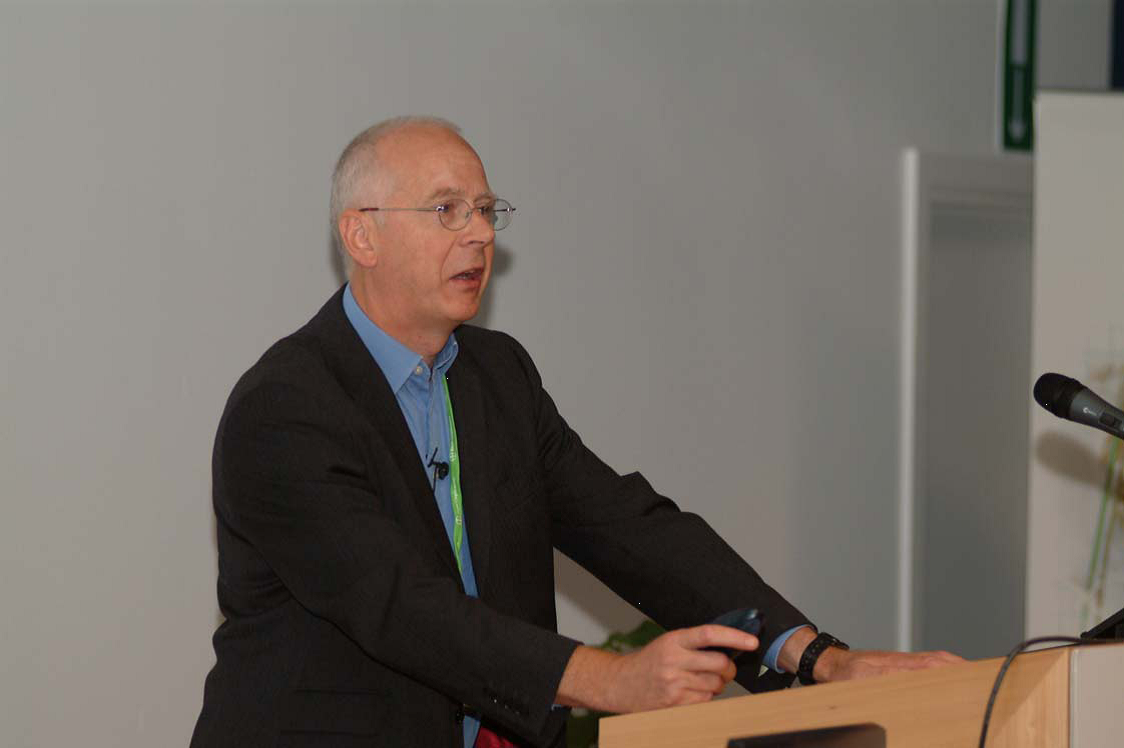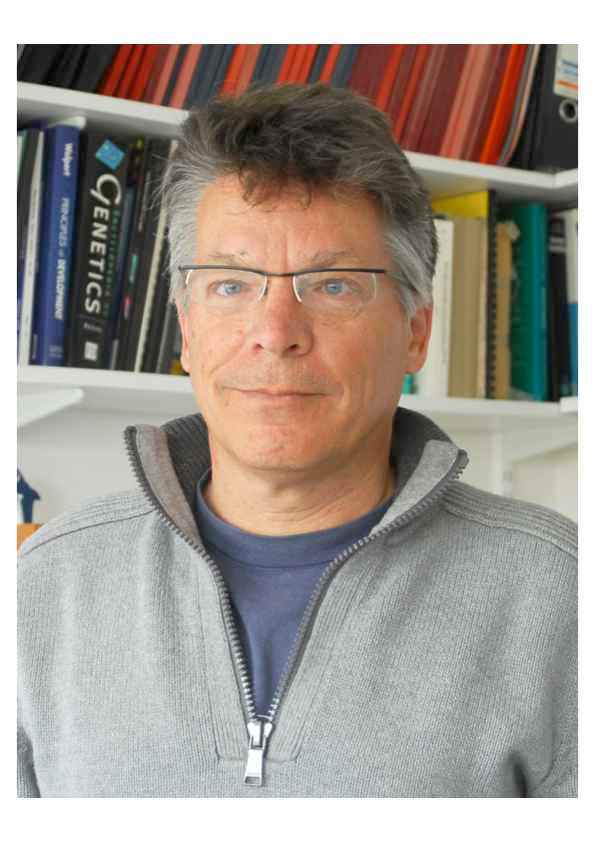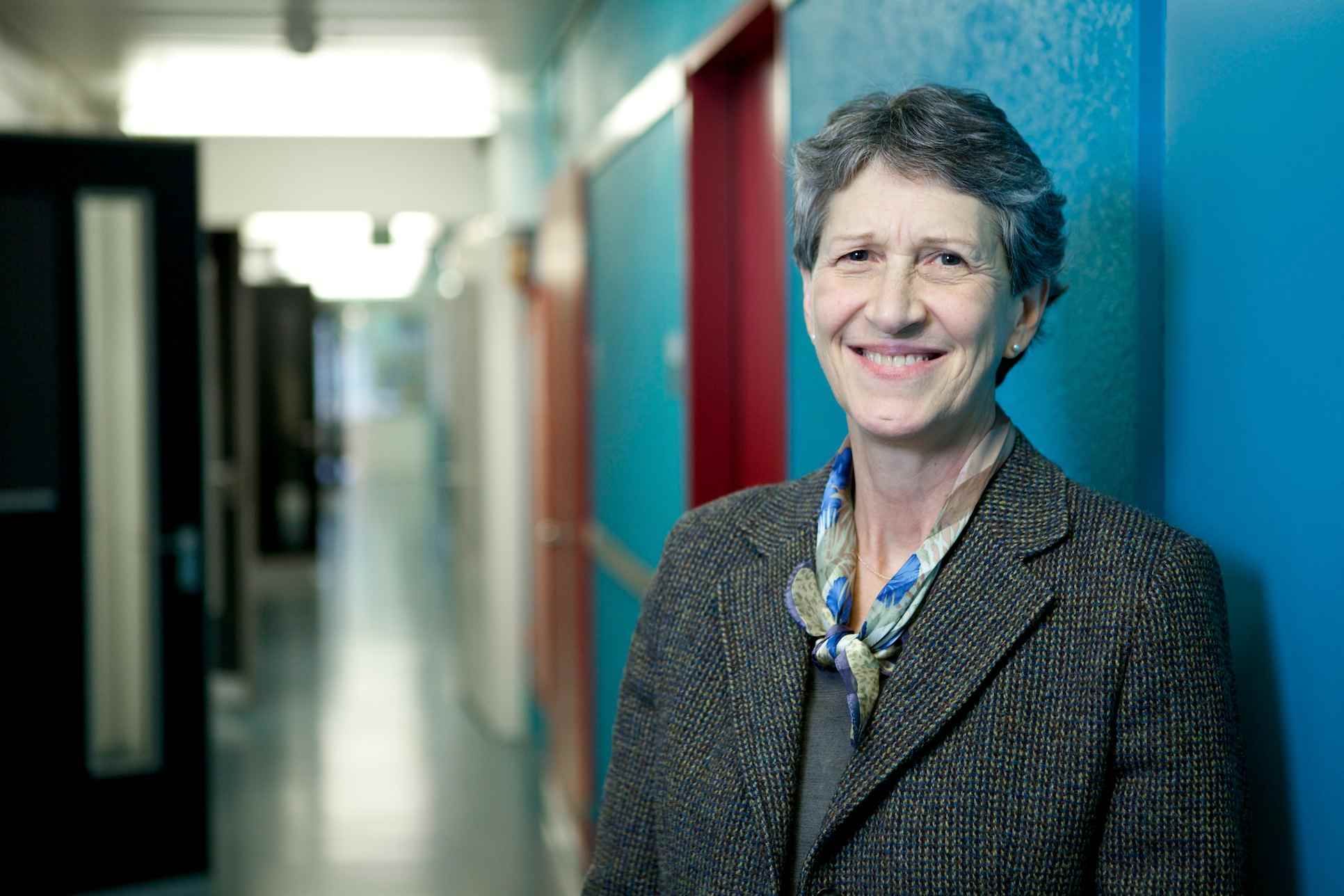Epigenetics and gene expression
Monday 1 September
16:30-18:00, Grand Auditorium
 |
When genomes meet – RNA, epigenetics and phenotypes of hybrid plant Eukaryotes contain small regulatory RNAs that have been referred to as the dark matter of genetics. They are typically 21-24 nucleotides long, associated with Argonaut or Piwi proteins. Some of these small RNAs guide the Argonaut/Piwi protein to a complementary RNA and they are negative regulators of gene expression acting at the level of messenger RNA turnover or translation. Others participate in more complex epigenetic systems affecting chromatin or they act as part of an RNA signal that moves between cells. In plants the posttranscriptional mechanism is involved in defense against RNA viruses. The chromatin effects play a role in defense against DNA viruses and transposable elements and it is associated with the establishment of heritable epigenetic marks. Biography David Baulcombe was a student in Botany at Leeds (BSc) and Edinburgh (PhD) Universities. After periods in Montreal, the University of Georgia and the Cambridge Plant Breeding Institute he spent 20 years at the Sainsbury Laboratory, Norwich. He joined Cambridge University in 2007 as Royal Society Research Professor and now as Regius Professor of Botany. David is a Fellow of the Royal Society and a foreign associate member of the US National Academy of Sciences. His awards include the 2006 Royal Medal of the Royal Society, the 2008 Lasker Award for basic biomedical sciences, the Wolf Prize for Agriculture in 2010 and the 2012 Balzan Prize. He was knighted in June 2009. His research interests involve plants and he focuses on gene silencing and epigenetics – the science of how nurture can influence nature. These topics link to disease resistance in plants and understanding of hybrids including hybrid crops. David is also interested in the application of science to develop sustainable agriculture. He is a member of the Biotechnology and Biological Sciences Research Council and in 2009 he chaired a Royal Society policy study on the contribution of biological science to food crop productivity. |
|||
|
|
||||
 |
The role of DNA modifications in epigenetic reprogramming and signalling Epigenetic information is relatively stable in somatic cells but is reprogrammed on a genome wide level in germ cells and early embryos. This reprogramming is essential for imprinting, and important for the return to pluripotency including the generation of iPS cells, the erasure of epimutations, and perhaps for the control of transposons in the genome. Following reprogramming, epigenetic marking occurs during lineage commitment in the embryo in order to ensure the stability of the differentiated state in adult tissues. Signalling and cell interactions that occur during these sensitive periods in development may have an impact on the epigenome with potentially long lasting effects. A key component of reprogramming is the erasure of DNA methylation, which may occur by passive (replication dependent) or active mechanisms. We are using genome wide profiling methods of methylation as well as the transcriptome in order to understand better the dynamics of erasure of DNA methylation and its biological outcomes. We have carried out genome-wide BS-seq (bisulfite sequencing) and RNA-seq in primordial germ cells and in early embryos, which has revealed the extent of reprogramming on an unprecedented scale, but also identifies potential mechanisms of transgenerational epigenetic inheritance. Reprogramming appears to be inextricably linked with expression of the pluripotency transcription factor network. The mechanisms leading to loss of DNA methylation probably involve an intricate combination of passive (DNA replication without maintaining methylation) and active mechanisms, in which deamination (by AID) and hydroxylation (by TET1-3) as well as base excision repair is implicated. We have identified signalling events which regulate DNA methylation dynamics during early development, and which connect reprogramming firmly with naïve pluripotency. We are investigating the roles of these pathways in natural and in experimental reprogramming. Recent work has identified proteins that may interpret different DNA modifications in the genome to regulate transcription and chromatin.Biography Wolf Reik obtained his MD from the University of Hamburg. He did his thesis work with Rudolf Jaenisch, and postdoctoral work with Azim Surani in Cambridge. He became a Fellow of the Lister Institute of Preventive Medicine at Cambridge and subsequently the Head of the Epigenetics Programme at the Babraham Institute in Cambridge and its Associate Director. He is honorary Professor of Epigenetics at the University of Cambridge and Associate Faculty at the Wellcome Trust Sanger Institute, where he is a founding member of the recently established Centre for Single Cell Genomics. He is a Member of EMBO, Fellow of the Academy of Medical Sciences, Fellow of the Royal Society, and Member of the Academia Europaea. His research interests are in epigenetics, particularly in epigenetic reprogramming during mammalian development and its role in stem cell biology and inheritance. His current work addresses the mechanisms of genome-wide demethylation in the mammalian germline, links between reprogramming and pluripotency, the potential for transgenerational epigenetic inheritance, and the role of epigenetic mechanisms in experimental reprogramming. His lab also develops new epigenomics technologies especially in small numbers of cells. |
|||
|
|
||||
 |
Susan M. Gasser Friedrich Miescher Institute for Biomedical Research, Basel, CH Loss of heterochromatin: effects on development and genome stability Over 60% of the human genome consists of repeat DNA and only a few per cent of our genome actually codes for proteins. As cells differentiate into specific cells types, basically all of the repeat DNA and most of our non-repeat sequences are packaged into a nontranscribed structure called heterochromatin. The histones bound to heterochroamtin bear specific modifications, which themselves attract transcription-repressing nonhistone proteins. In most cells heterochromatin is sequestered away from active chromatin by interaction with the nuclear envelope or the nucleolus. We have used the simple threadworm C. elegans to examine the importance of heterochromatin sequestration during the development of a multicellular organism. Genetic screens have identified the readers and writers of heterochromatin marks, and we have been able to eliminate these in worm embryos. Intriguing are the developmental aberrations that occur in cells that lack the characteristic heterochromatin marks. What happens when repeat sequences are no longer silenced ? Is development misprogrammed. C elegans has offered a unique and elegant model system to explore these questions, since centromere function is not dependent on H3K9 methylation. We find that genome stability is one of the primary functions achieved by packaging the genome into heterochromatin: repeat DNA including transposons are transcribed and meiotic maturation of germline cells becomes perturbed. This suggests that the changes in heterochromatin that accompany oncogenic transformation may cause and not only result from transformation. Biography Prof. Susan M. Gasser is the director of the Friedrich Miescher Institute for Biomedical Research, a position she assumed in 2004. In parallel, she holds a professorship at the University of Basel. Before joining the FMI, Susan Gasser was Professor of Molecular Biology at the University of Geneva, and for the preceding 15 years, she led a research group at the Swiss Institute for Experimental Cancer Research. Susan Gasser's research interests focus on how nuclear organization impinges on mechanisms of repair and replication fork stability and on epigenetic inheritance of cell fate decisions, exploiting genetics and quantitative live fluorescence imaging. She has authored more than 250 primary articles and reviews, and has received a number of awards for her work, including election to the Académie de France, the FEBS | EMBO Women in Science Award 2012, the INSERM International Prize in 2011, and both the Otto Naegeli Award and the Gregor Mendel Medal in 2006. |
|||





